In the mineral processing process, up to 30% of energy consumption comes from the crushing and screening links. How can this be optimized through equipment synergy? Traditionally, crushing equipment and screening equipment often operate independently, which can easily lead to problems such as over-crushing, screen blockage, or capacity mismatch. This not only increases energy consumption but also accelerates equipment wear. However, the synergistic effect of the two can dynamically adjust the coordination of crushing particle size and screening efficiency, achieving a closed-loop process and maximizing production capacity. This article will deeply analyze the synergistic mechanism of crushing and screening equipment to help you systematically solve processing bottlenecks.
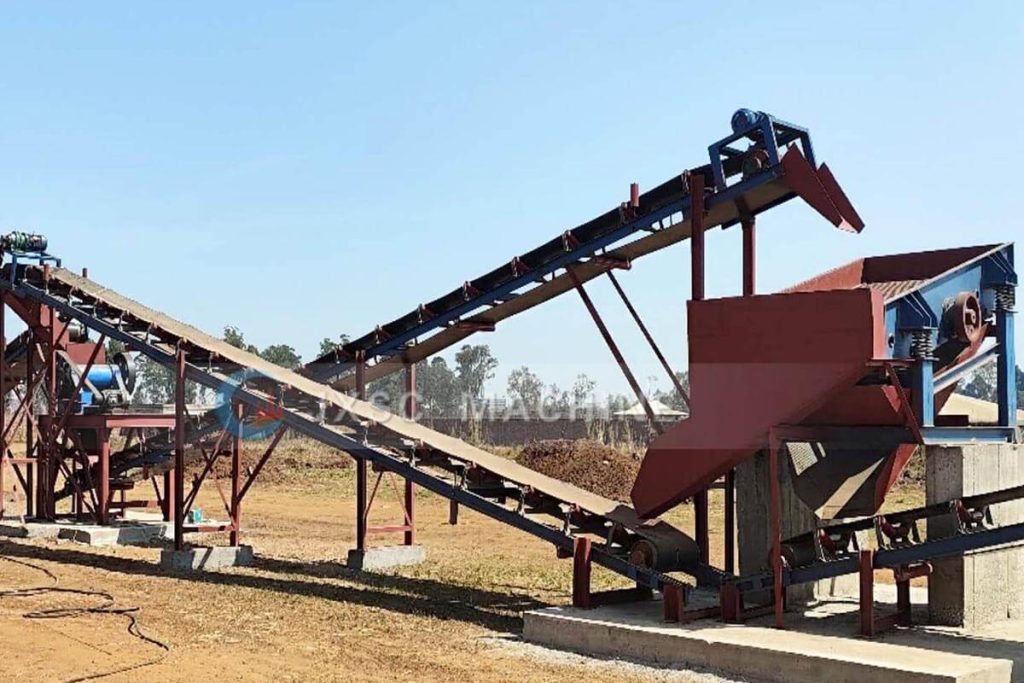
Crushing and screening are key front-end processes in mineral processing. Crushing equipment primarily reduces bulk ore to a particle size suitable for subsequent processing. Screening equipment helps control the size of crushed particles, improving product quality. Synergy refers to the organic integration of crushing and screening equipment in the mineral processing process, which together improves production efficiency and concentrate quality.
basic role of crushing and screening equipment
Key functions of crushing equipment
In mineral processing, crushing equipment is responsible for breaking down bulk ore into the target particle size. Depending on the stage of crushing, it can be divided into three main levels: coarse crushing, secondary crushing, and fine crushing. Each type of equipment has its own unique advantages and application scenarios.
1. Primary crushing:
Jaw crushers are typically used. Their powerful bite force and simple design allow them to efficiently process hard ores with a compressive strength of no more than 320 MPa, such as metal ores like gold, iron ore, and copper ore, as well as non-metallic ores like granite and limestone.
2. Secondary crushing:
Both crushing efficiency and particle shape control must be considered, and cone crushers are the primary choice. Their laminated crushing principle is particularly well-suited for medium-hard ores. They are often used in the processing of hard rock gold, lithium, and lead-zinc ores. Their intelligent control system allows for real-time adjustment of the main shaft position, maintaining a product particle size of 30-60 mm while reducing energy consumption by 15%. They are particularly well-suited for secondary crushing in precious metal mines where controlled dissociation is crucial.
3. Fine Crushing:
Impact or hammer crushers are primarily used. The impact crusher‘s “rock-on-rock” principle is particularly well-suited for producing construction sand, such as granite and limestone aggregates. Its dual “impact + grinding” action makes it particularly suitable for fine grinding plants of strategic minerals such as manganese, quartz sand, feldspar, iron, and tantalum-niobium. Its product can achieve a cubic content exceeding 90%, significantly improving subsequent screening efficiency. However, hammer crushers have certain limitations regarding material hardness and moisture content, making them particularly suitable for medium and small-scale mineral processing plants and for the intermediate and fine crushing of low-hardness minerals.
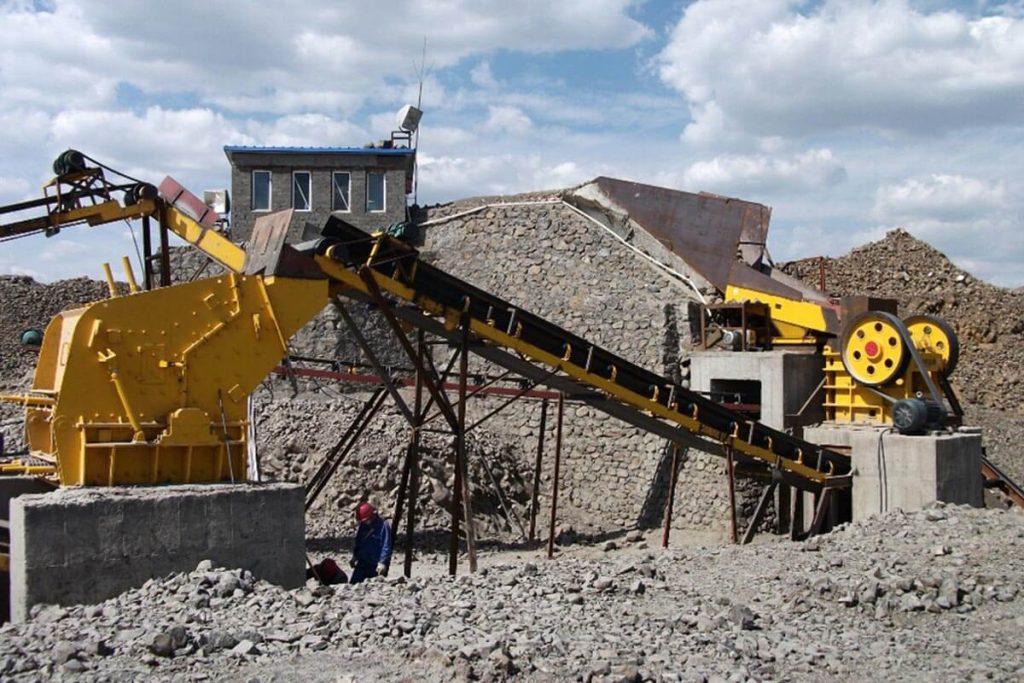
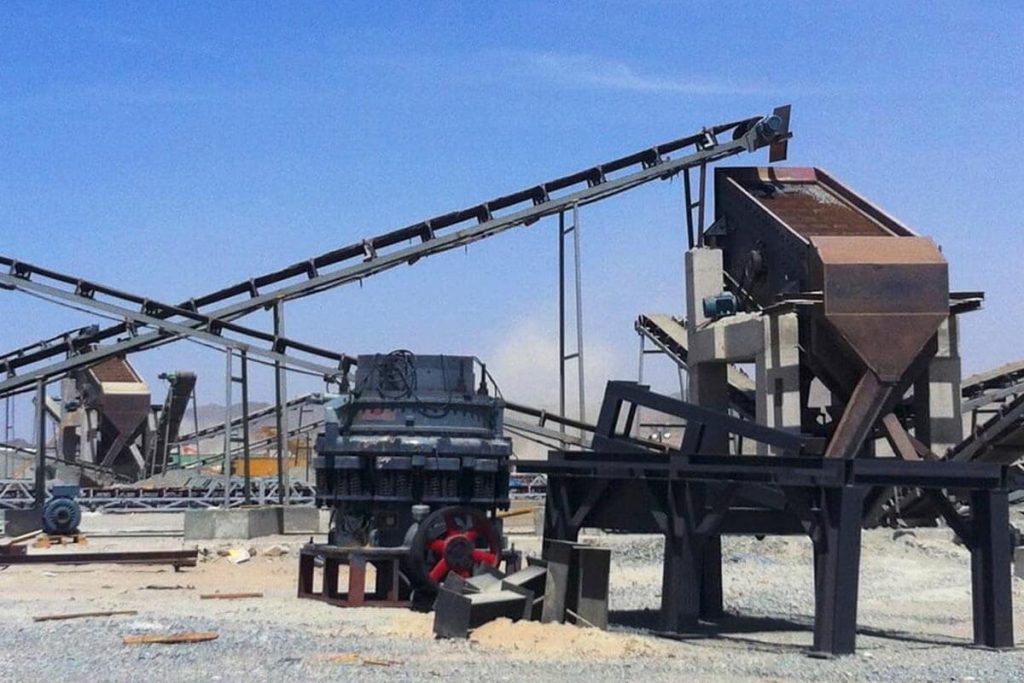
core task of screening equipment
Screening, a key step in mineral classification, primarily achieves precise material diversion through particle size classification, directly impacting the efficiency of subsequent separation operations and the quality of the concentrate. Depending on its position in the process flow, screening equipment performs three distinct functions.
1. Pre-screening:
As a pretreatment step before crushing, its primary task is to remove fine-grained materials that meet standards from the raw ore. Double-deck vibrating screens (customizable aperture sizes) are typically used for pre-screening, pre-screening the raw ore and enabling the removal of up to 20% of waste rock.
2. Checking screening:
This system, installed after the crushing equipment, forms part of a closed-circuit crushing system and controls the particle size acceptance rate of the crushed product. High-frequency vibrating screens are typically used, using multiple layers (2-4) of screens to separate the material into acceptable grades for direct processing. Excessive grades are returned to the crushing equipment for further processing. Trommel screens can also be used during mineral processing to accommodate the screening needs of materials with varying moisture contents.
3. Grading and screening:
This focuses on the precise separation of materials into multiple particle sizes. Common equipment includes trommel screens, suitable for wet, sticky materials, fully adapting to the screening needs of materials with varying moisture contents. Linear and circular vibrating screens are suitable for dry, loose materials, such as sand and gravel aggregates. The goal is to separate materials into 3-6 particle sizes based on process requirements, providing standardized raw materials for subsequent grinding, gravity separation, magnetic separation, or further processing.
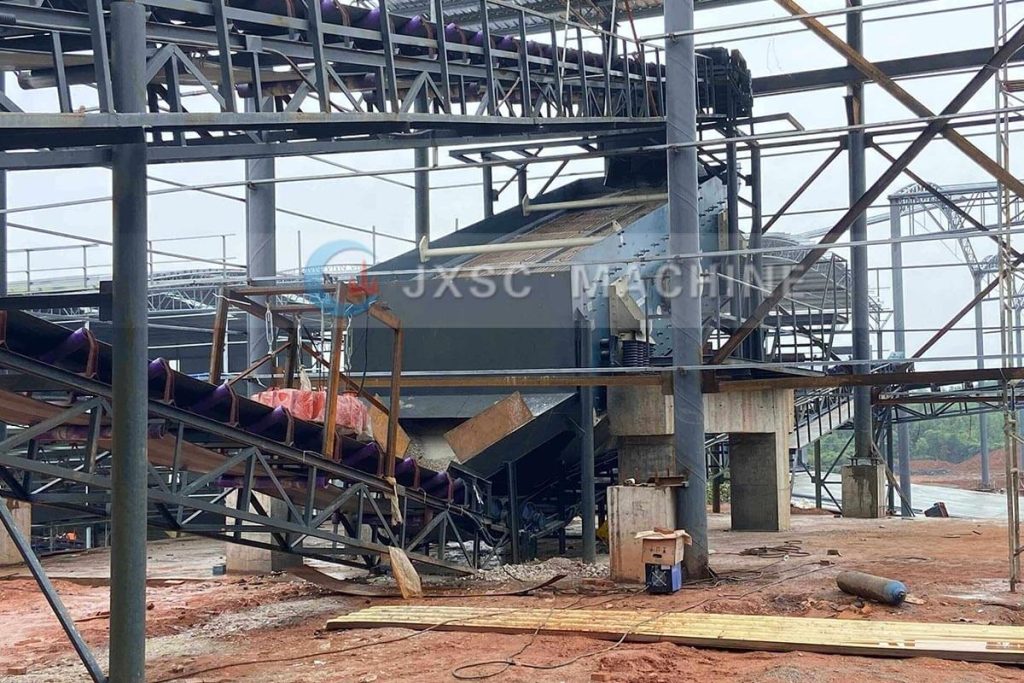
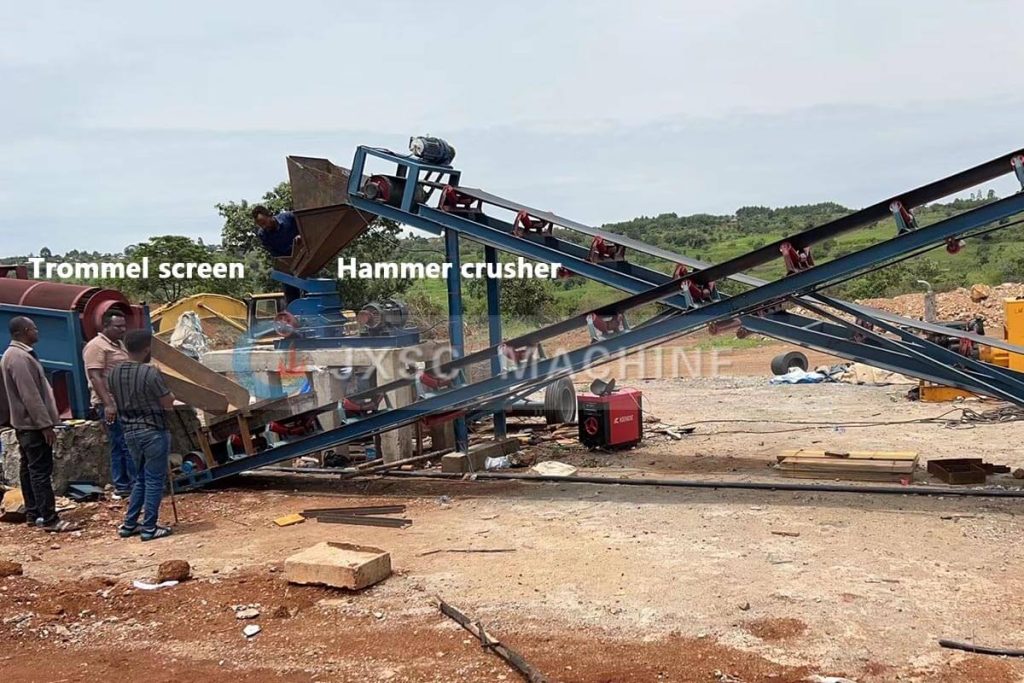
principle of synergistic effect of crushing and screening equipment
The Complementarity of Crushing and Screening Equipment
Crushing and screening complement each other in the mineral processing process. Crushing provides the appropriate particle size for subsequent operations, while screening ensures proper ore grading. The synergistic effect of crushing and screening is essentially “crushing provides the particle size foundation, screening achieves quality control.” Through closed-loop circulation, particle size grading, and dynamic adjustment, raw ore is transformed into selected material with a uniform particle size and high compliance rate. The ultimate goal of this synergy is to achieve precise control of ore particle size, improve crushing efficiency, and optimize subsequent sorting operations.
Process Closed-Loop Optimization
The discharge particle size of the crushing equipment directly determines the load and efficiency of the screening equipment, while the screening results in turn guide the optimization of crushing parameters. For example, if the vibrating screen detects that the coarse particle content exceeds a threshold, the system automatically adjusts the crusher discharge opening to reduce the amount of coarse particles returned.
If the frequency of screen clogging increases, the crusher speed is increased to enhance crushing force and reduce sticky material agglomeration. The synergistic effect of these two processes effectively prevents fine-grained material from “clogging” the screen surface.
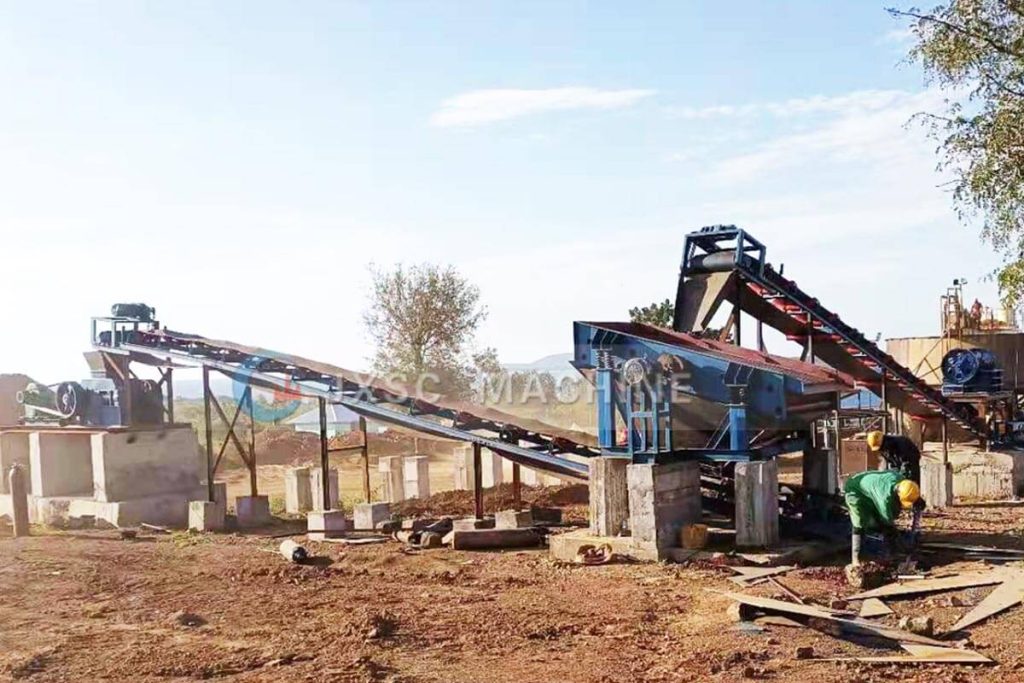
Energy Consumption and Cost Control
Through coordinated control, the crushing process can dynamically adjust output based on the real-time processing capacity of the screening equipment. For example, when the crusher is operating, output remains stable at the designed value, avoiding energy consumption surges caused by overloading. In a short beneficiation process design, crushed material is fed directly into the screening machine through a chute, eliminating energy losses on intermediate conveyor belts and reducing overall operating costs.
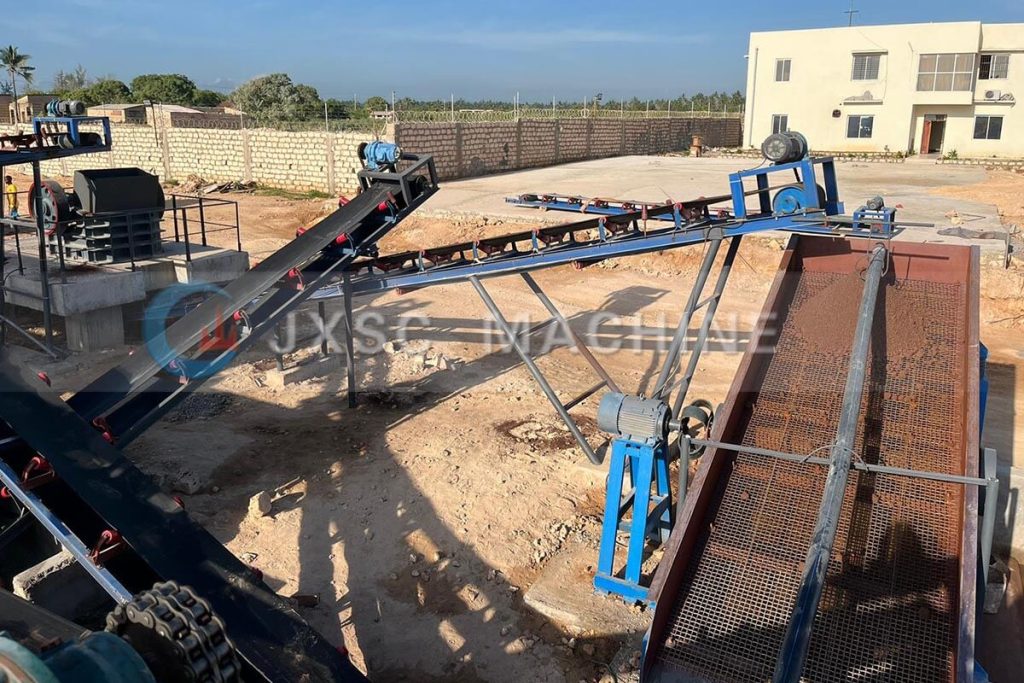
How to configure crushing and screening equipment - maximize synergy
(1) Matching Material and Equipment Parameters
Based on the target product particle size, adjust the crushing gap (e.g., jaw crusher discharge opening width) and screen aperture to ensure screening efficiency matches crushing capacity. For example, for high-hardness materials (such as granite and basalt), a jaw crusher + cone crusher combination with a wear-resistant lining is used. For medium-to-low-hardness materials (such as limestone and copper), impact crushers or hammer crushers are used to improve crushing efficiency. In mining processing, emphasis is placed on synergizing coarse crushing and pre-screening, typically employing a “jaw crusher + vibrating screen” combination suitable for processing a variety of metal and non-metallic ores.
(2) Integrated Design
- The modular structure of “crushing unit + screening unit + drive system + intelligent control” integrates two processes into a single device (e.g., a screening and crushing all-in-one unit), reducing material transfer steps, shortening processing time, and increasing overall capacity.
- The crushing and screening units are linked by belts or gears to ensure power matching and synchronized operation, avoiding material accumulation or efficiency loss due to speed differences.
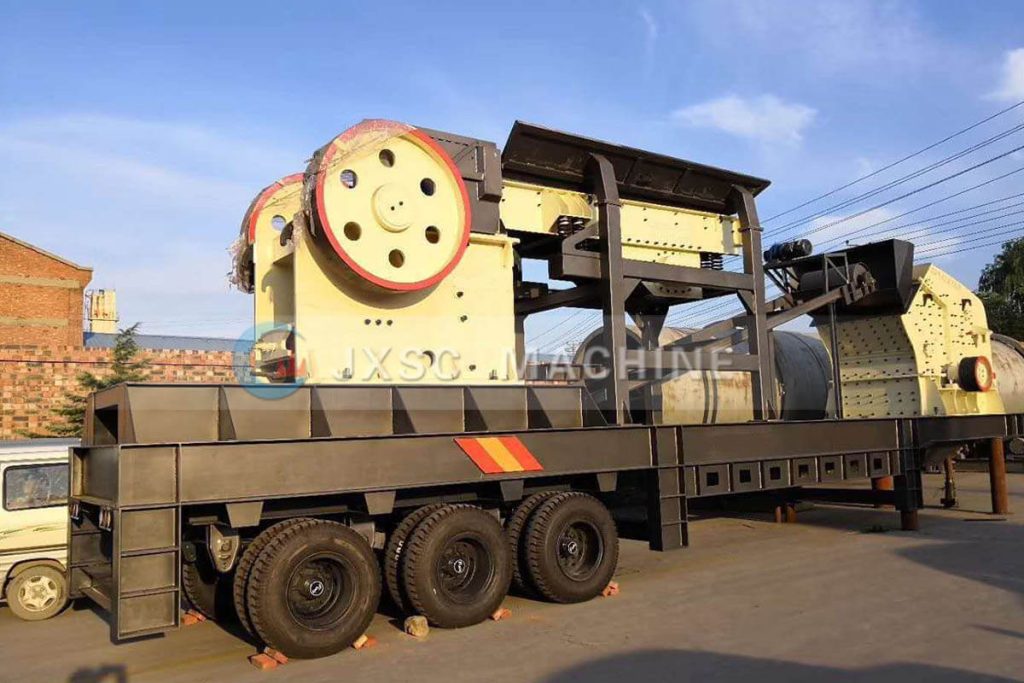
(3) Closed-loop Process
After crushing, the material enters the screening unit directly. Coarse particles on the screen are returned to the crushing chamber via a return conveyor for secondary processing until the particle size reaches the specified value. Qualified fine particles under the screen are directly discharged, forming a closed-loop “crushing-screening-return” process.
(4) Real-time Parameter Control
The system is equipped with a PLC to monitor equipment operating conditions, such as current, amplitude, and temperature. It can also dynamically adjust parameters such as crushing force, screening frequency, and feed rate.
(5) Environmental Protection
The crushing and screening equipment‘s fully enclosed design and dust removal interface control dust emissions. A water circulation system can be configured as needed to achieve zero wastewater discharge, meeting green mineral processing standards.
The crushing process controls the output particle size by adjusting parameters such as jaw plate gap and rotor speed. Screening results, in turn, guide the optimization of crushing parameters. The effectiveness of this synergistic effect is closely related to the mine scale, production capacity requirements, material characteristics, equipment selection, and environmental standards. Contact us online to customize ultra-durable crushing and screening or other mineral processing equipment to achieve comprehensive optimization of efficiency, energy consumption, and environmental protection.